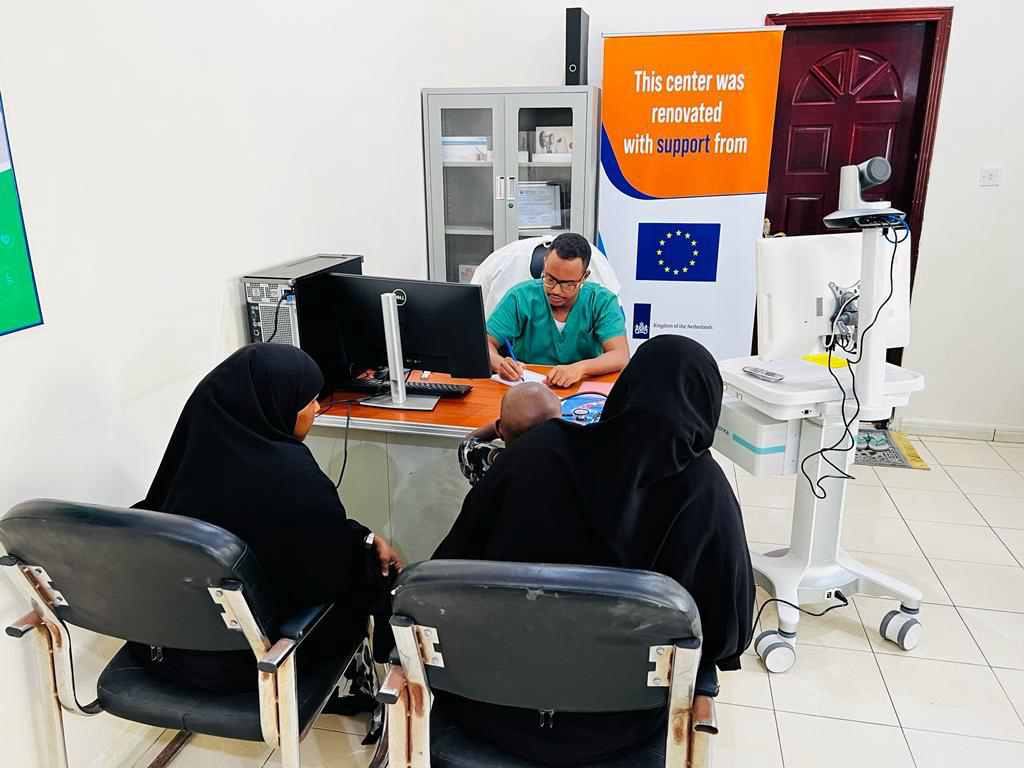Disclaimer:
Please be aware that the content herein has not been peer reviewed. It consists of personal reflections, insights, and learnings of the contributor(s). It may not be exhaustive, nor does it aim to be authoritative knowledge.
Title
Please provide a name for your action learning plan.
Telemedicine solution for improving health care services in remote areas.
Challenge statement
Challenge type: If you are working on multiple challenges, please indicate if this is your "big bet" or "exploratory" challenge.
Please note: we ask you to only submit a maximum of 3 challenges - 1x Big Bet, 2x Exploratory. Each challenge must be submitted individually.
EXPLORATORY
Challenge statement: What is your challenge? (Please answer in specific terms: "Our challenge is that...”.)
The challenge is aiming to improve the health care services in the clinics located in the marginalized communities' neighborhoods (IDPs) and remote areas that doesn't have access to good quality medical services by injecting a Telemedicine solution into the already existing clinics.
Background: What is the history of your challenge? What is causing or driving it? Who is involved? How does the current situation look like? What undesired effects does it produce?
The Access to health care in Somalia is considered one of the lowest indicators in the world due to the decades of instability and absence of public health services. The majority of populations seeks health care from the private hospitals and have to pay out a high cost in return to the treatment services. The situation varies from urban to rural areas in which circumstances are worse in the remote areas due to lack of both public and private health care centers. With the situation depressed by implications of Covid-19 and recurrent droughts, it’s important to explore new solutions to enable communities access to medical services.
The United Nations Development programme (UNDP) Accelerator Lab has created a partnership with United Nations Population Fund (UNFPA) and World Health Organization (WHO) to jointly support and enhance the capacity of five youth/ community centers set up under an EU-funded UNFPA project in 5 cities. Through the partnership, UNDP is supporting the expansion of the service offer of the existing Centers by experimenting with the telemedicine equipment to enhance the quantity and quality of health services currently provided by the Centers’ clinics. UNDP is supporting the centers to obtain the equipment, installation services and hands-on training to the clinic’s health workers, to enable the center’s current health facilities seek specialized medical services, clinical guidance and support from specialized doctors in the city’s major hospitals and from Diaspora’s doctor network interested to voluntarily conduct medical services from distance to the clients of the center’s clinic coming from marginalized communities including IDPs.
The initiative is aiming to provide a free or low cost, high quality medical services to the center’s neighborhoods beneficiaries of young people and marginalized communities and provide them access to greater services, improve youth center’s doctors knowledge by enabling them share experience, exchange knowledge with their peers from well-established health service providers, as well as promoting potential use of telemedicine solutions in the country to facilitate access to medical services by populations living in remote areas with limited access of health care.
Quantitative evidence: What (official) data sources do you have on this challenge that better exemplifies the importance and urgency of this frontier challenge? You can add text, a link, or a picture.
According to Un Independant expert on the situation human rights in Somalia, access to health care remains dangerously low in the country. we are planning to analyze recorded data prior introducing Telemedicine solution to t five community centers to use as a baseline and conduct a endline survey to measure the value the telemedicine solution could bring to the community in terms of changes of beneficiaries' numbers and types of services.
Qualitative evidence: What weak signals have you recently spotted that characterizes its urgency? Please provide qualitative information that better exemplifies the importance and urgency of this frontier challenge. You can add text, a link, or a picture.
During COVID-19 the shortcomings and huge gaps in the health system in Somalia was evident especially in relation to . The limited expertise in certain medical specialities was evident and telemedicine was identified as a possible solution to supplement this gap.
Value proposition: What added value or unique value proposition is your Accelerator Lab bringing to solving this challenge? Why is it your Lab that needs to work on this challenge and not other actors within UNDP, other stakeholders in the country respectively? Why is it worth investing resources to this challenge?
The Lab has identified this opportunity to work with other UN partners and community centers to explore ways to facilitate access to health care services by communities living in remote areas with limited access to specialized medical services.
Short “tweet” summary: We would like to tweet what you are working on, can you summarize your challenge in a maximum of 280 characters?
UNDP Somalia's Accelerator Lab is introducing a Telemedicine solution to improve access to health care services in remote areas
Partners
Who are your top 5 partners for this challenge? Please submit from MOST to LEAST important and state Name, Sector and a brief description of the (intended) collaboration.
Please state the name of the partner:
WHO
What sector does our partner belong to?
United Nations
Please provide a brief description of the collaboration.
n/a
Is this a new and unusual partner for UNDP?
No
Learning questions
Learning question: What is your learning question for this challenge? What do you need to know or understand to work on your challenge statement?
Could the Telemedicine help providing more access to appropriate health services to remote communities? How does it reduce cost? Will the patients and doctors be satisfied and would like to use in the future?
To what stage(s) in the learning cycle does your learning question relate?
Sense, Explore, Test
Usage of methods: Relating to your choice above, how will you use your methods & tools for this learning question? What value do these add in answering your learning question?
N/A
Existing data gaps: Relating to your choice above, what existing gaps in data or information do these new sources of data addressing? What value do these add in answering your learning question?
N/A
Closing
Early leads to grow: Think about the possible grow phase for this challenge - who might benefit from your work on this challenge or who might be the champions in your country that you should inform or collaborate with early on to help you grow this challenge?
N/A
END OF ACTION LEARNING PLAN: Thank you! The form saves automatically and your submission has been recorded. You may now exit this window.


 3Good health and well-being
3Good health and well-being 10Reduced innequalities
10Reduced innequalities
Comments
Log in to add a comment or reply.